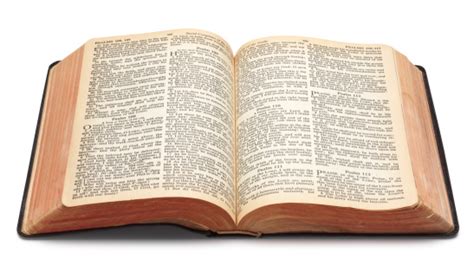"The pagan cults of Greece and Rome were part of what are commonly called the mystery religions. By Paul's time they had dominated the near eastern world for thousands of years and indirectly would dominate much of western culture through the middle ages and, even until today.
The mystery religions had many forms and variations, but a common source. In his vision on the island of Patmos John was shown "the judgment of the great harlot who sits on many waters," on whose "forehead a name was written, a mystery, 'Babylon the great, the mother of all harlots and the abominations of the earth'" (Rev. 17:1,5). Here the Lord pictures His judgment of the world religion. At the end of the Tribulation the true church will have been raptured (1 Thess. 4:13-18; Rev. 3:10) and the world will begin to establish a religion of it's own that will be truly universal. It will be the composite of all the worlds false religions, which will "give their power and authority to the beast, "the Antichrist" (Rev. 17:13). The final form of that all-powerful, universal religion will represent the completion of the mystery religions that historically originated in ancient Babylon.
In its organized form false religion began with the tower of Babel, from which Babylon derives it's name. Cain was the first false worshiper, and many individuals after him followed his example. But organized pagan religion began with the descendants of Ham, one of Noah's three sons, who decided to erect a great monument that would "reach into heaven" and make themselves a great name (Gen. 10:9-10; 11:4). Under the leadership of the proud and apostate Nimrod they planned to storm heaven and unify their power and prestige in a great worldwide system of worship. That was man's first counterfeit religion, from which every other false religion in one way or another has sprung.
God's judgment frustrated their primary purpose of making a grand demonstration of humanistic unity. By confusing "their language, that they may not understand one another's speech," and scattering "them abroad from there over the face of the whole earth" (Gen. 11:7-8) the Lord halted the building of the tower and fractured their solidarity. But those people took with them the seeds of that false, idolatrous religion, seeds that they and their descendants have been planting throughout the world ever since. The ideas and forms were altered, adapted, and sometimes made more sophisticated, but the basic system remained, and remains, unchanged. That is why Babel, or Babylon, is called "the mother of all harlots and of the abominations of the earth" (Rev. 17:5). She was the progenitor of all false religions.
From various ancient sources, it seems that Nimrod's wife. Semiramis (the first), apparently was high priestess of the Babel religion and the founder of all mystery religions. After the tower was destroyed and the multiplicity of languages developed, she was worshiped as a goddess under many different names. She became Ishtar of Syria, Astarte of Phoenicia, Isis of Egypt, Aphrodite of Greece, and Venus of Rome--in each case the deity of sexual love and fertility. Her son, Tammuz, also came to be deified under various names and was the consort of Ishtar and god of the underworld.
According to the cult of Ishtar, Tammuz was conceived by a sunbeam, a counterfeit version of Jesus' virgin birth. Tammuz corresponded to Baal in Phoenicia, Orisis in Egypt, Eros in Greece, and Cupid in Rome. In every case, the worship of these gods and goddesses was associated with sexual immorality. The celebration of Lent has no basis in scripture, but rather developed from the pagan celebration of Semiramis's mourning for forty days over the death of Tammuz (cf. Ezek. 8:14) before his alleged resurrection--another of Satan's mythical counterfeits.
The mystery religions originated the idea of baptismal regeneration, being born again merely through the rite of water baptism, and the practice of mutilation and flagellation to atone for sins or gain spiritual favor. They also began the custom of pilgrimages, which many religions follow today, and the paying of penance for forgiveness of sins for oneself and for others. (John Macarthur NT commentary '1 Corinthians' )
The mystery religions had many forms and variations, but a common source. In his vision on the island of Patmos John was shown "the judgment of the great harlot who sits on many waters," on whose "forehead a name was written, a mystery, 'Babylon the great, the mother of all harlots and the abominations of the earth'" (Rev. 17:1,5). Here the Lord pictures His judgment of the world religion. At the end of the Tribulation the true church will have been raptured (1 Thess. 4:13-18; Rev. 3:10) and the world will begin to establish a religion of it's own that will be truly universal. It will be the composite of all the worlds false religions, which will "give their power and authority to the beast, "the Antichrist" (Rev. 17:13). The final form of that all-powerful, universal religion will represent the completion of the mystery religions that historically originated in ancient Babylon.
In its organized form false religion began with the tower of Babel, from which Babylon derives it's name. Cain was the first false worshiper, and many individuals after him followed his example. But organized pagan religion began with the descendants of Ham, one of Noah's three sons, who decided to erect a great monument that would "reach into heaven" and make themselves a great name (Gen. 10:9-10; 11:4). Under the leadership of the proud and apostate Nimrod they planned to storm heaven and unify their power and prestige in a great worldwide system of worship. That was man's first counterfeit religion, from which every other false religion in one way or another has sprung.
God's judgment frustrated their primary purpose of making a grand demonstration of humanistic unity. By confusing "their language, that they may not understand one another's speech," and scattering "them abroad from there over the face of the whole earth" (Gen. 11:7-8) the Lord halted the building of the tower and fractured their solidarity. But those people took with them the seeds of that false, idolatrous religion, seeds that they and their descendants have been planting throughout the world ever since. The ideas and forms were altered, adapted, and sometimes made more sophisticated, but the basic system remained, and remains, unchanged. That is why Babel, or Babylon, is called "the mother of all harlots and of the abominations of the earth" (Rev. 17:5). She was the progenitor of all false religions.
From various ancient sources, it seems that Nimrod's wife. Semiramis (the first), apparently was high priestess of the Babel religion and the founder of all mystery religions. After the tower was destroyed and the multiplicity of languages developed, she was worshiped as a goddess under many different names. She became Ishtar of Syria, Astarte of Phoenicia, Isis of Egypt, Aphrodite of Greece, and Venus of Rome--in each case the deity of sexual love and fertility. Her son, Tammuz, also came to be deified under various names and was the consort of Ishtar and god of the underworld.
According to the cult of Ishtar, Tammuz was conceived by a sunbeam, a counterfeit version of Jesus' virgin birth. Tammuz corresponded to Baal in Phoenicia, Orisis in Egypt, Eros in Greece, and Cupid in Rome. In every case, the worship of these gods and goddesses was associated with sexual immorality. The celebration of Lent has no basis in scripture, but rather developed from the pagan celebration of Semiramis's mourning for forty days over the death of Tammuz (cf. Ezek. 8:14) before his alleged resurrection--another of Satan's mythical counterfeits.
The mystery religions originated the idea of baptismal regeneration, being born again merely through the rite of water baptism, and the practice of mutilation and flagellation to atone for sins or gain spiritual favor. They also began the custom of pilgrimages, which many religions follow today, and the paying of penance for forgiveness of sins for oneself and for others. (John Macarthur NT commentary '1 Corinthians' )

